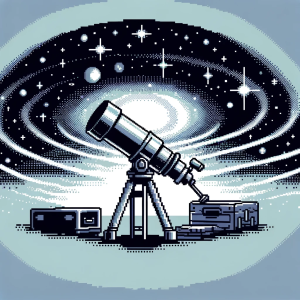
Unlocking the Secrets of the Cosmos: How Super-Massive Galaxies Illuminate Our Understanding of the Universe
The vast expanse of the cosmos has always been a source of intrigue and mystery. Recent advancements in astronomical research, as highlighted by a groundbreaking study led by Enia Xhakaj and a team of astrophysicists, have opened new avenues for exploring this enigmatic realm. This team has made a compelling case for using observations of super-massive galaxies to understand the universe’s evolution.
The Stellar Study: Super-Massive Galaxies as Cosmic Probes
The research revolves around an innovative approach that uses super-massive galaxies to extract cosmological information, a method typically reserved for galaxy clusters. This pioneering work leverages data from the Dark Energy Spectroscopic Survey (DESI) and hypothesizes that massive galaxies can mirror the constraining power of galaxy clusters in understanding the universe.
The study’s brilliance lies in its simplicity and precision. Unlike traditional methods that rely heavily on the problematic identification of galaxy clusters, this new method bypasses these challenges. By focusing on the ‘outskirt’ mass of galaxies (stellar mass measured at 50-100 kpc radii), the researchers provide a more reliable measure of a galaxy’s mass and, by extension, its halo mass – a critical factor in understanding the universe’s structure.
The Significance: Why It Matters
What makes this study particularly noteworthy is its potential to refine our understanding of dark matter and the universe’s expansion. Galaxies, especially the super-massive ones, act as beacons in the dark, unveiling the intricate tapestry of cosmic structures. By observing these galaxies, we can better understand the distribution and behavior of dark matter, which constitutes a significant portion of the universe’s mass.
Beyond the Technical Jargon: Understanding the Basics
At its core, the research hinges on the concept of the Halo Mass Function (HMF). This function helps in quantifying the distribution of mass in the universe, primarily through the lens of galaxy clusters and now, as proposed, through super-massive galaxies. The ‘Halo’ here refers to the mass surrounding galaxies, dominated by dark matter.
Methodology: The Research in Action
Utilizing statistical analysis and complex models, the team compared the effectiveness of using galaxy clusters versus super-massive galaxies for cosmological studies. They found that massive galaxies could offer similar constraints to galaxy clusters in measuring cosmological parameters like Ωm (matter density) and σ8 (clustering amplitude).
Breaking Down the Results: What They Found
One of the striking findings of the research is the similarity in the constraining power of massive galaxies and galaxy clusters when it comes to understanding the universe’s growth and structure. However, massive galaxies have an edge due to their potential in bypassing some of the complex systematics associated with cluster identification.
The Road Ahead: Future Implications
This research paves the way for a novel approach in cosmological studies. Future endeavors can build upon this methodology, refining our understanding of the universe’s composition and evolution. It also opens up exciting opportunities for utilizing upcoming data from large-scale surveys like DESI and LSST.
Engage with the Cosmos: How You Can Be Part of This Journey
The universe is a cosmic puzzle, and each discovery is a piece that helps us see the bigger picture. Stay tuned for more updates in this field and consider exploring the night sky – who knows what secrets you might uncover!
Unlock the Secrets of Science
Get ready to unlock the secrets of science with ‘This Week in Science’! Our newsletter, designed specifically for educators and science aficionados, delivers a weekly digest of revolutionary research, innovative discoveries, and motivational tales from the scientific frontier. Subscribing is your key to a treasure trove of insights that can revolutionize your approach to teaching and learning science. Sign up today at no cost and start a journey that deepens your understanding and passion for science



